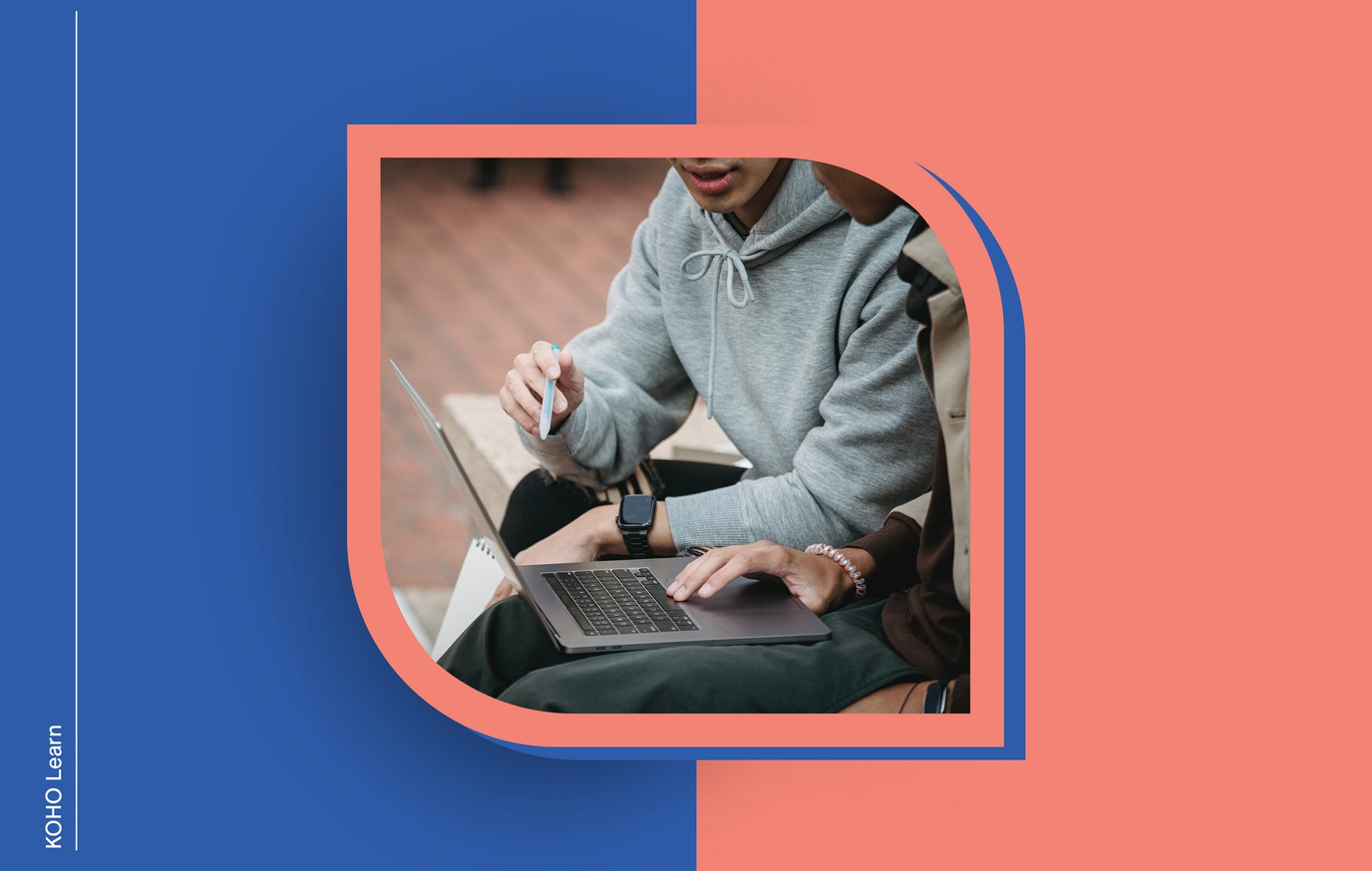Whether you're heading to post-secondary school or helping someone who is, figuring out how to pay for education in Canada can feel overwhelming.
A student line of credit lets you borrow only what you need when you need it. If you don't use it, you won't pay interest.
Want to know how student lines of credit work and how they compare to traditional loans? Here's what you need to know.
Build Credit History With KOHO.
What is a student line of credit and how does it work?
A student line of credit is a loan from banks that helps cover educational expenses like tuition, books and living costs. You can borrow money when needed, pay it back when possible, and borrow again within your credit limit.
Your borrowing capacity depends on your financial situation and education program.
Here's what makes student lines of credit different from other credit products:
You control your borrowing
You decide when to use funds and how much to take within your approved limit. If you're approved for $25,000, that's the maximum you can borrow.
Only pay for what you use
You only repay what you actually borrow plus interest on that amount. If you have a $15,000 limit but only borrow $5,000, you only pay back $5,000 plus interest. If you don't borrow anything, you pay nothing.
Remember that interest keeps adding up until you pay off your balance completely, so paying down debt quickly saves you money.
Interest-only payments while in school
Most student lines of credit only require interest payments while you're studying. You need to make minimum interest payments each statement period.
You typically don't have to start repaying the principal (the amount you borrowed) until after graduation. However, you can make larger payments anytime to reduce your debt and save on interest.
Grace period after graduation
Many lenders give you extra time after graduation before principal repayment begins. This grace period lets you pay only interest for a few months after finishing school.
Check Your Credit Score.
Types of student lines of credit
There are two main types in Canada:
Standard student line of credit: For students enrolled in general post-secondary education
Professional student line of credit: For students pursuing professional degrees like medicine, dentistry, or law
Student line of credit vs. student loan: Which is better?
Neither option is inherently better - they're just different. Your choice depends on your preferences and financial situation.
You can even use both: perhaps a traditional loan for tuition and a line of credit for other expenses. Talk with your financial advisor about possibilities.
Consider these factors when deciding:
Borrowing flexibility
With a line of credit, you can borrow up to your limit whenever needed. Traditional loans provide a fixed amount, requiring new applications if you need more.
Creating a student budget helps determine your financial needs during school and beyond.
Convenience
Lines of credit are great for unexpected expenses. If your laptop breaks, you can immediately access funds without reapplying for a loan.
With traditional loans, you might need to submit a new application for additional funds.
Repayment options
Traditional loans typically have fixed payments. Lines of credit let you decide how much to repay as long as you meet minimum payments.
You can pay more when you have extra money or just the minimum during tight months.
Interest rates
Student lines of credit have variable rates that can change over time. Traditional student loans usually have fixed rates that remain constant.
Financial assistance
Government student loans often come with financial aid options like grants, loan forgiveness, and repayment assistance.
For example, eligible physicians can get up to $60,000 forgiven on Canada Student Loans, and nurses up to $30,000.
Risks to consider with student lines of credit
Before applying, consider these potential downsides:
Changing interest rates
Variable interest rates mean your monthly payments can increase or decrease based on the Bank of Canada rates and your bank's prime rate. Budget accordingly.
Cosigner responsibility
If someone cosigns your line of credit and you struggle with payments, they become responsible. Both parties should understand this commitment.
Credit score impact
Timely payments help build your credit score, but missed payments damage it. This affects future borrowing ability for both students and cosigners.
Accumulating interest
More borrowing means more interest. Without careful management, debt can grow quickly. Discuss your options with a financial advisor.
Potential debt burden
Using a line of credit unwisely can lead to significant debt, especially if borrowed funds aren't strictly for education. Budgeting helps avoid this pitfall.
Post-graduation financial pressure
After school, you must start repaying both principal and interest. This can be challenging if you're job hunting or starting at entry-level pay.
Throughout your education, seek career mentorship and resources to focus on your future career rather than debt after graduation.
Making informed choices for your education
Understanding student lines of credit gives you another tool for financing your education. By weighing the flexibility of a line of credit against traditional loans and considering your personal circumstances, you can make choices that support both your education and financial wellbeing.
Remember that financial planning is just as important as academic planning.

About the author
Quan works as a Junior SEO Specialist, helping websites grow through organic search. He loves the world of finance and investing. When he’s not working, he stays active at the gym, trains Muay Thai, plays soccer, and goes swimming.
Read more about this author